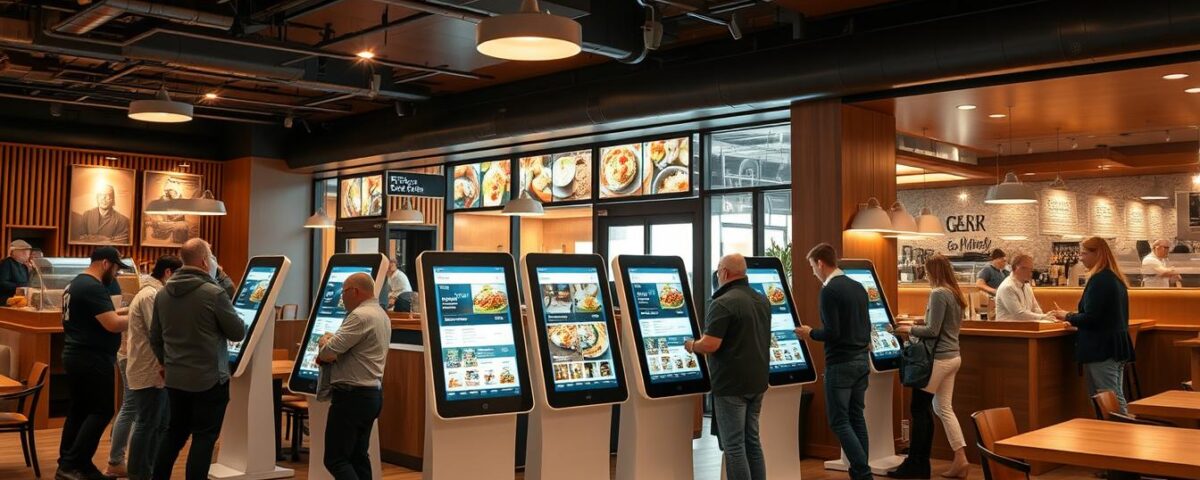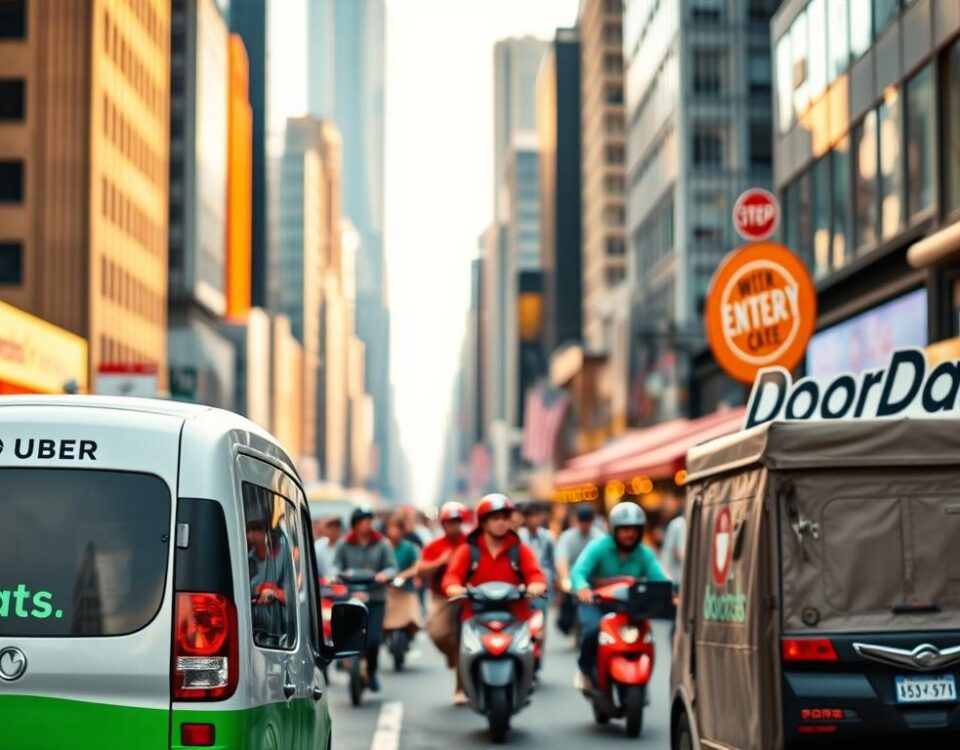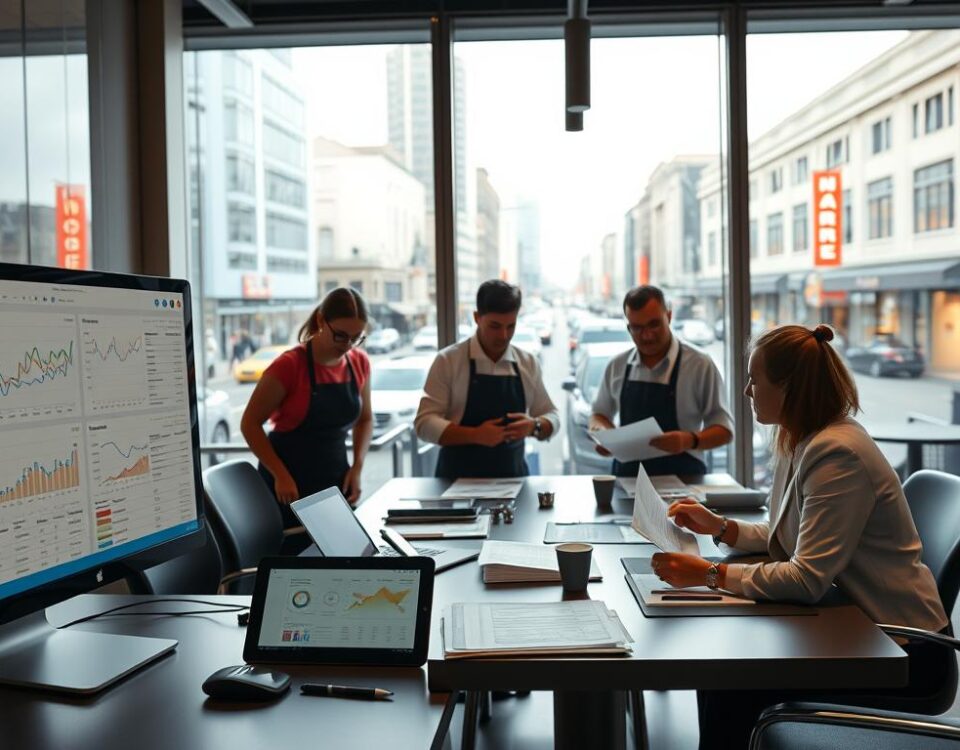
The Secret Software That’s Saving Restaurants Thousands in Waste
August 23, 2025
Restaurant POS Systems Compared: 2025 Buyer’s Guide
August 24, 2025Imagine walking into a busy restaurant where you can quickly place your order without waiting in line to talk to a cashier. This is now a reality thanks to self-service kiosks. Did you know that restaurants using kiosks have seen a significant increase in revenue due to improved ordering efficiency and accuracy?
As labor costs rise, many restaurant owners are turning to technology to stay competitive. By implementing kiosks, customers can enjoy a streamlined ordering process, while restaurants benefit from increased order accuracy and potentially larger ticket sizes. But is this the right move for your business?
Key Takeaways
- Kiosks can improve the customer experience by streamlining the ordering process.
- Restaurants see increased revenue due to improved order accuracy and efficiency.
- Self-service technology helps mitigate rising labor costs.
- Kiosks can suggest additional items, potentially increasing average ticket sizes.
- Implementing kiosks requires careful consideration of customer acceptance.
The Growing Challenge of Restaurant Staffing
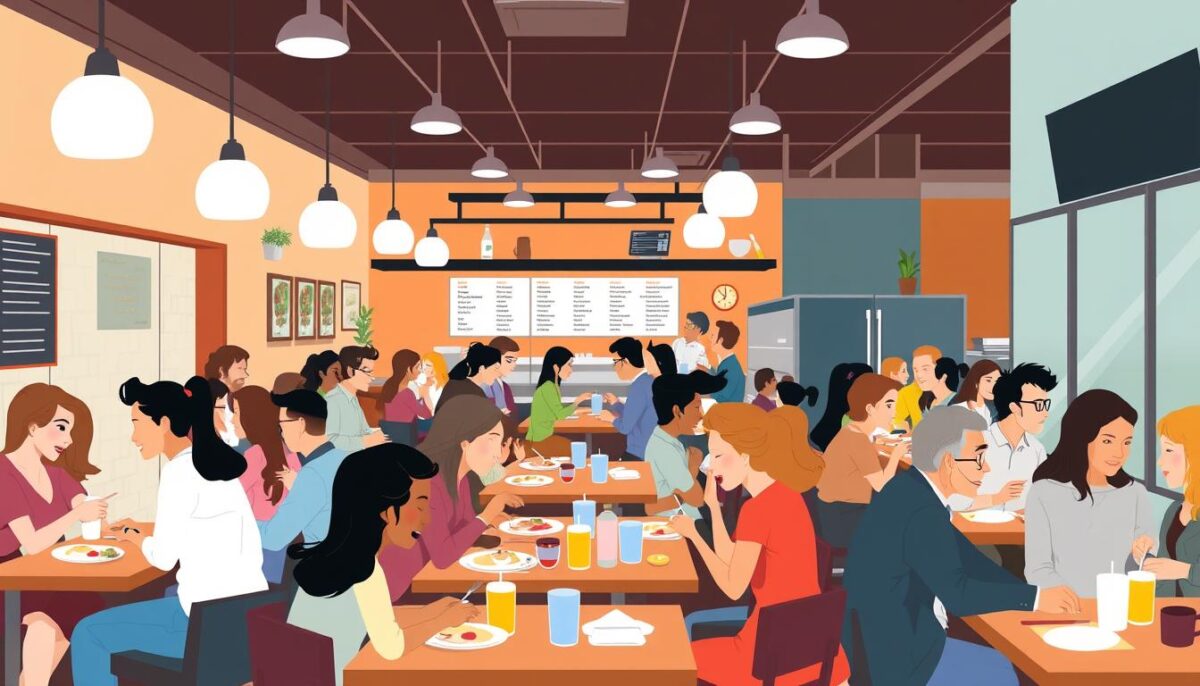
The restaurant industry is facing a significant challenge in staffing, which affects customer satisfaction and operational efficiency. Long queues are a thing of the past with self-ordering kiosks, enabling quick order placement and accelerated checkout processes without staff intervention.
Rising Labor Costs in the Restaurant Industry
The cost of labor is increasing, putting a strain on restaurant resources. Rising labor costs mean that restaurants have to allocate more budget to staffing, affecting their bottom line.
How Staffing Shortages Impact Customer Experience
Staffing shortages lead to longer wait times, inconsistent service, and increased order errors, ultimately affecting customer experience. Understaffed restaurants struggle to provide the level of service customers expect.
- Longer wait times affect customer satisfaction and potentially drive away business.
- Inconsistent service due to stretched staff leads to variable customer experiences.
- Order errors increase when staff are overworked, creating frustration for customers and kitchen teams.
- Staffing issues create a negative cycle where poor service leads to fewer customers, further straining resources.
- Self-service kiosks can help break this cycle by providing consistent service even during peak hours or staffing shortages.
What Are Self-Service Restaurant Kiosks?
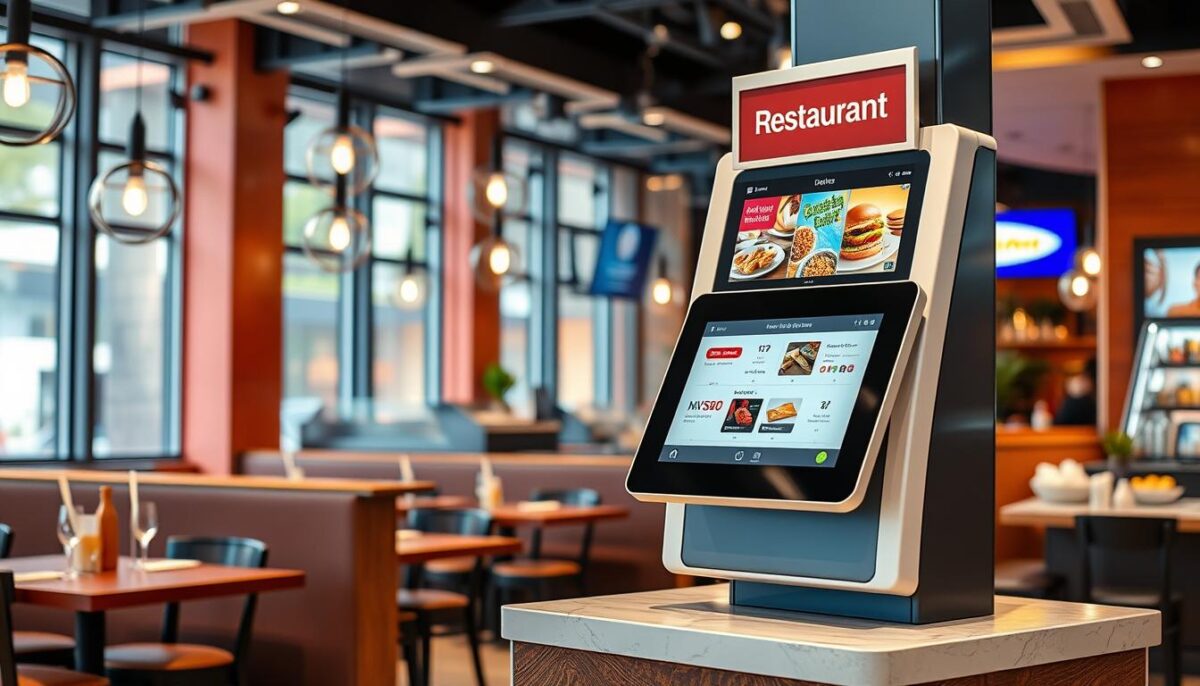
Self-service kiosks have become a game-changer in the restaurant industry, allowing customers to take control of their ordering experience. These interactive terminals enable patrons to browse menus, customize orders, and make payments efficiently.
Types of Restaurant Kiosks Available Today
There are various types of kiosks available, catering to different restaurant needs. Some kiosks are designed for quick-service environments, while others are more suited for casual dining establishments.
Key Features of Modern Self-Ordering Systems
Modern self-ordering kiosks come equipped with advanced features that enhance the customer experience. These include:
- Intuitive user interfaces that make it easy for customers of all ages to navigate and place orders.
- AI-powered recommendation engines, like the one used in Applova’s Restaurant Self Service Kiosk, which suggest complementary items based on customer selections.
- Customization capabilities that allow customers to modify their orders with precision.
- Multiple payment processing options, including credit cards, mobile payments, and loyalty program integration.
- Multilingual support and accessibility features that make kiosks usable by a broader customer base.
By incorporating these features, restaurants can significantly improve the overall dining experience, increase customer satisfaction, and ultimately drive sales.
How Restaurant Kiosks Boost Orders Without Adding Staff
Restaurant kiosks are revolutionizing the way customers order, making the process faster and more efficient. By allowing customers to build their order, send it to the kitchen, and make payment in just a few taps, kiosks like those offered by EZ-Chow are improving the overall customer experience.
Streamlining the Ordering Process
The use of kiosks streamlines the ordering process, reducing the need for customers to wait in line or be attended to by staff. This not only improves customer satisfaction but also allows restaurants to manage their workload more effectively.
Intelligent Upselling and Cross-Selling Capabilities
Kiosks are equipped with intelligent upselling and cross-selling capabilities, suggesting additional items to customers based on their order. This can lead to increased average ticket sizes and enhanced customer experience.
Reducing Wait Times During Peak Hours
During peak hours, kiosks can significantly reduce wait times by processing multiple orders simultaneously. This leads to improved customer satisfaction and potentially increased customer retention.
| Benefits of Kiosks | Impact on Restaurants |
|---|---|
| Streamlined Ordering | Increased Efficiency |
| Intelligent Upselling | Higher Average Ticket Sizes |
| Reduced Wait Times | Improved Customer Satisfaction |
The Financial Impact of Implementing Kiosks
Kiosks are revolutionizing the restaurant industry by streamlining the ordering process, thereby reducing labor costs and increasing ticket sizes. This transformation not only enhances the customer experience but also significantly impacts the bottom line.
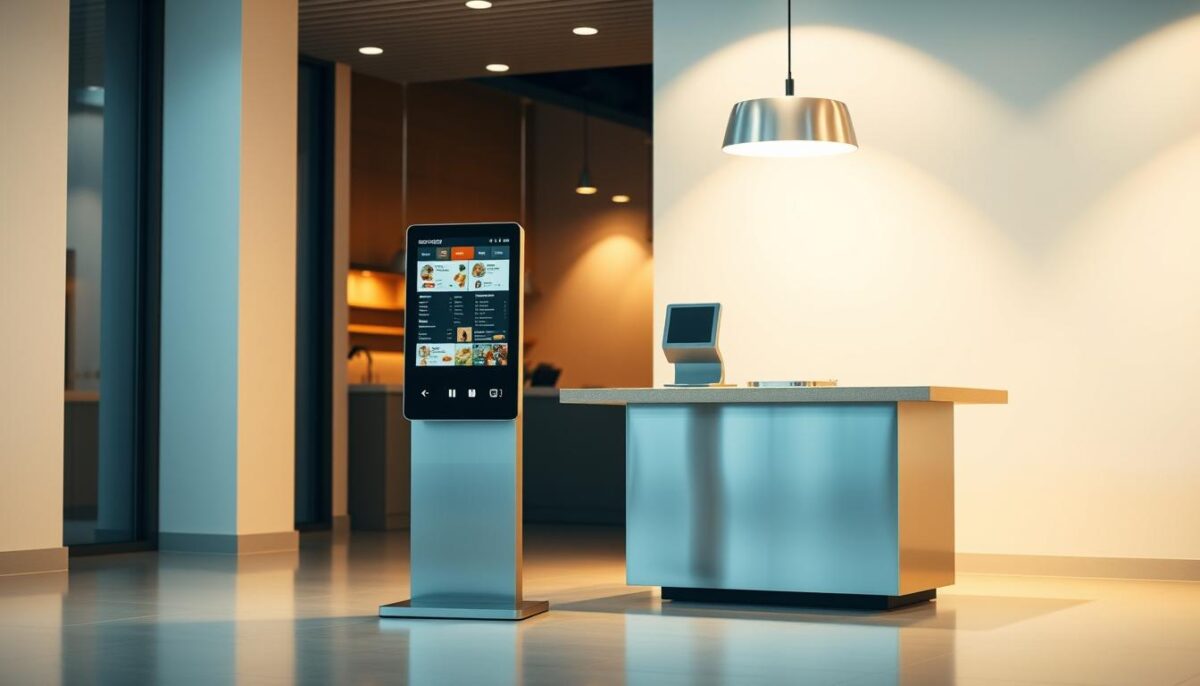
Average Increase in Ticket Size (20-30%)
The integration of kiosks has been shown to increase the average ticket size by 20-30%. This is largely due to the kiosks’ ability to suggest additional items or upgrades, a feature that traditional ordering systems often lack. By intelligently upselling and cross-selling, kiosks not only boost revenue but also enhance the dining experience by offering customers a more personalized service.
For instance, a customer ordering a burger might be prompted to add fries or a dessert, increasing the overall order value. This strategic suggestion is made possible by the advanced algorithms used in modern kiosk systems.
Labor Cost Savings and Reallocation
One of the most significant financial benefits of implementing kiosks is the reduction in labor costs. By automating the ordering process, restaurants can significantly decrease the number of staff needed during peak hours. This not only leads to direct labor savings but also allows for the reallocation of staff to more critical areas such as food preparation and customer service, thereby improving overall business efficiency.
- Reducing the number of front-counter staff needed during peak hours, creating significant labor savings.
- Reallocating staff from order-taking to food preparation or customer service, improving overall restaurant efficiency.
- Maintaining service levels even with reduced staffing, a critical advantage during labor shortages.
- Analyzing the potential reduction in training costs as fewer staff need to be trained on register operations and menu details.
- Highlighting how labor savings often provide the fastest and most reliable return on investment for kiosk implementation.
| Financial Benefit | Description | Impact |
|---|---|---|
| Labor Cost Reduction | Automating the ordering process | Significant labor savings |
| Increased Ticket Size | Intelligent upselling and cross-selling | 20-30% increase |
| Staff Reallocation | Moving staff to food preparation and customer service | Improved customer experience and efficiency |
By implementing kiosks, restaurants can achieve a significant reduction in labor costs while enhancing the overall dining experience. This strategic move not only improves efficiency but also contributes to the bottom line, making it a valuable investment for the business.
“The future of restaurant technology is not just about adopting new tools; it’s about creating a seamless experience that delights customers and streamlines operations.”
Enhancing Customer Experience Through Self-Service
The integration of self-service kiosks in restaurants significantly enhances customer experience by minimizing errors and maximizing satisfaction. Self-service restaurant kiosks are the best tool to overcome human errors.
Giving Customers Control Over Their Orders
By allowing customers to directly order from the kiosk system, there’s zero percent chance of miscommunication, which ultimately helps minimize human error and maximizes customer satisfaction. This direct interaction empowers customers, giving them more control over their dining experience.
Reducing Order Errors and Improving Satisfaction
Accurate orders lead to fewer remakes, shorter wait times, and improved customer satisfaction. The visual confirmation of orders on kiosk screens helps customers verify their selections before submitting, further reducing the likelihood of errors.
| Benefits | Description | Impact |
|---|---|---|
| Reduced Miscommunication | Direct ordering from kiosks eliminates errors between customers and staff. | Improved order accuracy |
| Visual Order Confirmation | Customers verify their orders on the kiosk screen before submission. | Fewer remakes and shorter wait times |
| Increased Customer Control | Customers have more control over their orders and dining experience. | Enhanced customer satisfaction and loyalty |
Integration With Your Existing Restaurant Systems
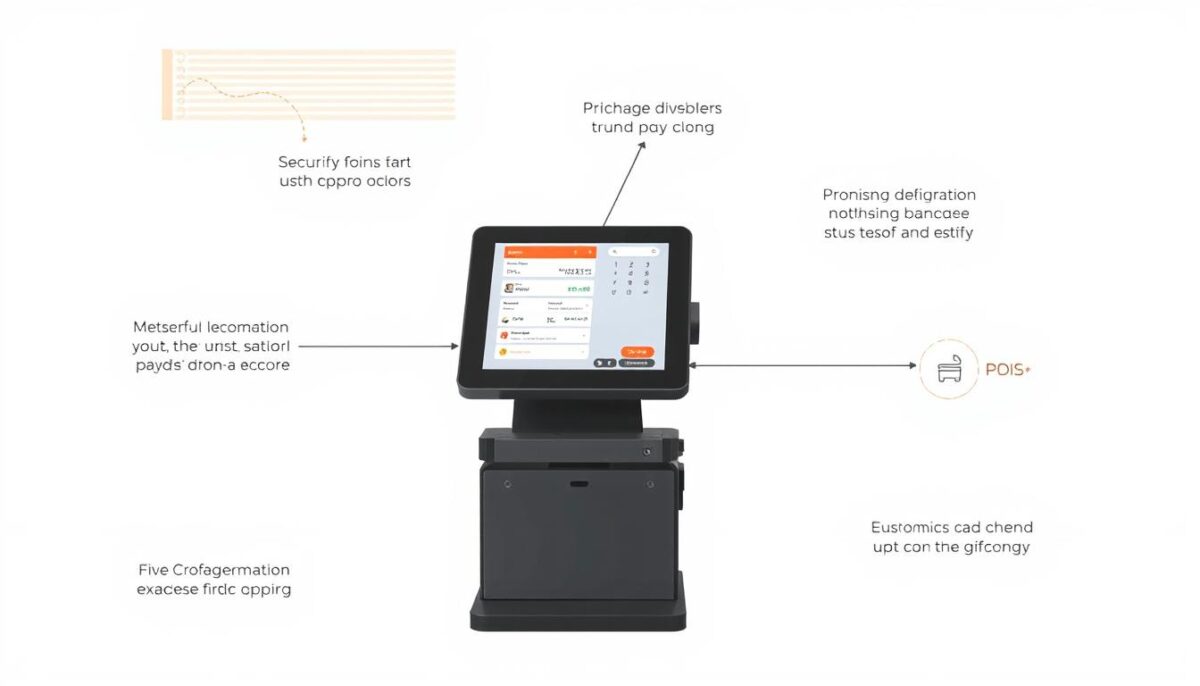
The key to maximizing the benefits of restaurant kiosks lies in their ability to seamlessly integrate with your current restaurant operations. At Applova, our kiosk software is designed to streamline operations by sending orders directly to the kitchen with pinpoint accuracy, thus speeding up the service.
Compatible POS Systems and Technology
Our platform is engineered to work harmoniously with various POS systems, enhancing order fulfillment and inventory management for a more efficient and error-free process. This compatibility ensures that your kiosk investment pays off by improving overall efficiency.
Kitchen Display System Integration
Integration with kitchen display systems (KDS) is a critical aspect of our kiosk solution. Here’s how it benefits your restaurant:
- I’ll explore how kiosk integration with KDS creates a seamless flow of order information from customer to kitchen.
- I’ll discuss how this integration eliminates the need for manual ticket handling, reducing errors and improving kitchen efficiency.
- I’ll examine how integrated systems can prioritize and route orders based on preparation time, ensuring food is ready at the optimal time.
- I’ll analyze how KDS integration provides valuable data on preparation times and bottlenecks, helping restaurants optimize their kitchen operations.
- I’ll highlight how a well-integrated kitchen system improves coordination between front-of-house and back-of-house staff, enhancing the overall customer experience.
ROI and Cost Recovery Timeline
The return on investment (ROI) for kiosks is a critical consideration for restaurant owners. As restaurants increasingly adopt self-service technology, understanding the financial benefits becomes essential.
Initial Investment Considerations
When implementing kiosks, the initial investment includes the cost of hardware, software, and installation. Restaurants must also consider the cost of training staff to effectively use and maintain the new technology. According to industry reports, the average cost of a kiosk can range from $2,000 to $5,000 per unit.
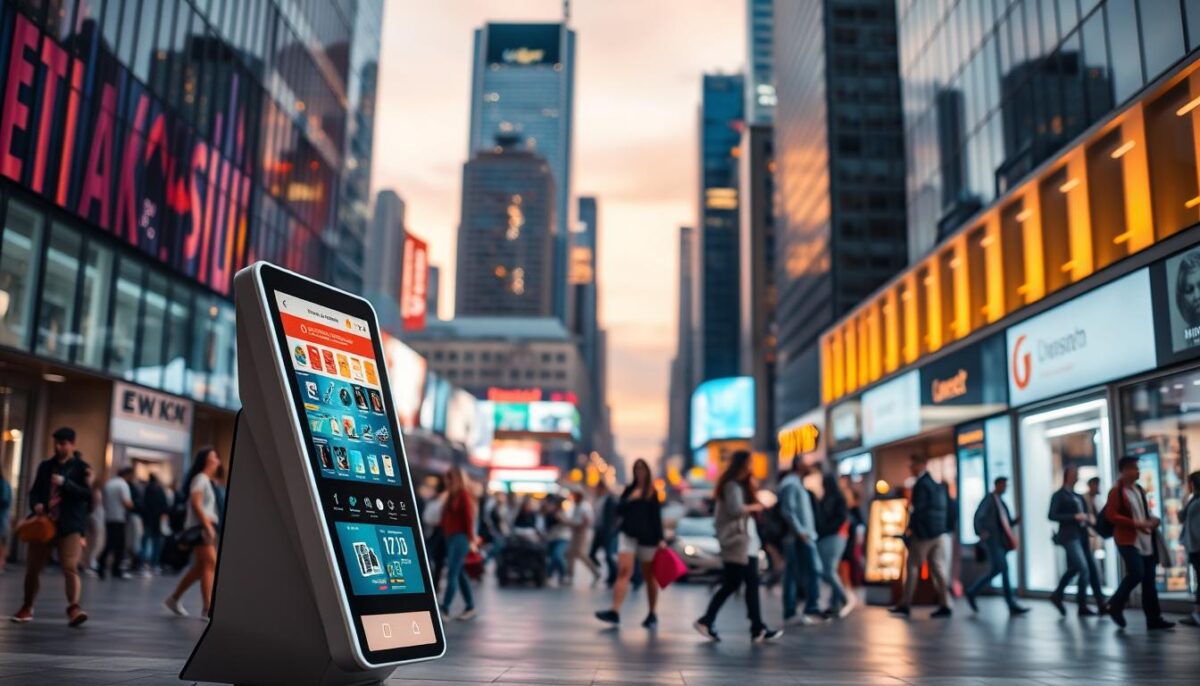
How Quickly Kiosks Pay for Themselves
Kiosks can pay for themselves in as little as 3-6 months, depending on the restaurant segment and implementation effectiveness. Key drivers of ROI include labor savings, increased average ticket size, and improved operational efficiency. By streamlining the ordering process and reducing labor costs, restaurants can recover their investment quickly and enjoy sustained revenue growth.
For instance, a quick-service restaurant saw a 20% increase in average ticket size after implementing kiosks, significantly accelerating their ROI. By promoting the use of kiosks through effective marketing and optimal placement, restaurants can further enhance their return on investment.
Real Success Stories: Restaurants Thriving With Kiosks
Restaurants across the United States are embracing kiosks to revolutionize their service. By adopting self-service kiosks, restaurants can enhance the customer experience while improving operational efficiency.
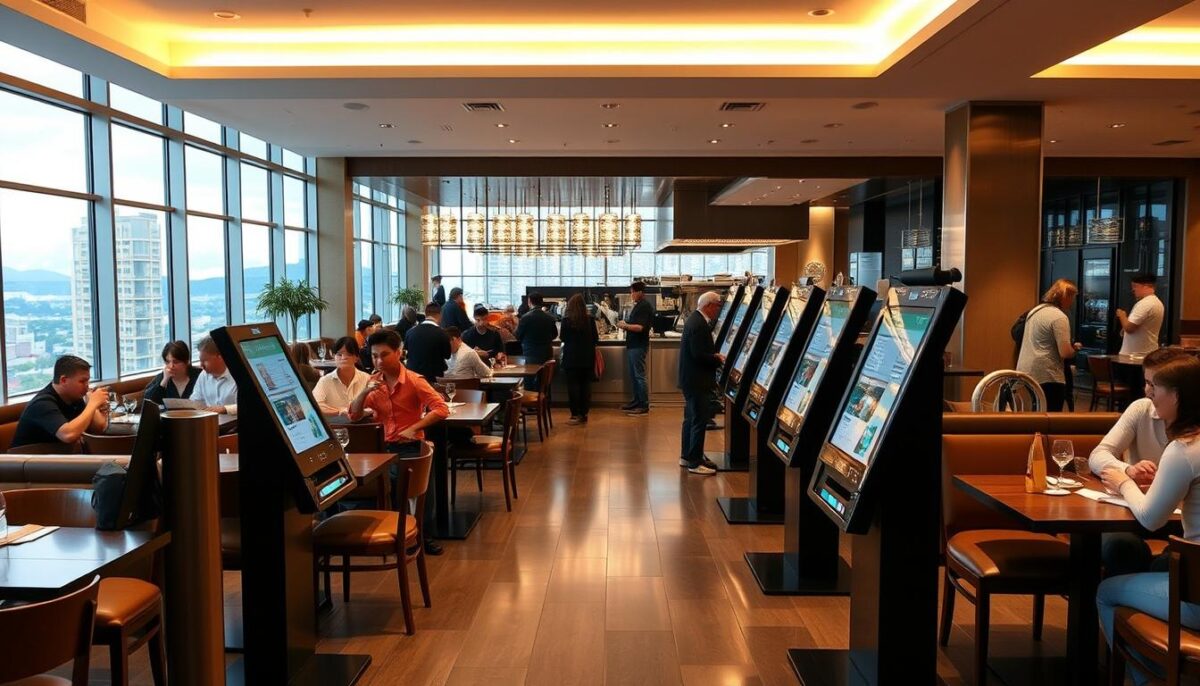
Case Study: Increased Revenue at Quick-Service Restaurants
Quick-service restaurants have seen a significant increase in revenue after implementing kiosks. For instance, Myriam Nicolas, Owner at Brown Butter Café, reported that they hit almost 75% of their sales through their app and web store, stating, “Applova has been instrumental! The app and web store have helped my business to recover, and we have seen an increase in sales ever since.”
Case Study: Improved Efficiency at Casual Dining Establishments
Casual dining establishments have also benefited from kiosks, improving their operational efficiency. By integrating kiosks into their service model, these restaurants reduced wait times, improved table turnover, and enhanced the overall dining experience for their customers. Additionally, kiosks enabled them to collect valuable food quality feedback, allowing for continuous improvement.
As these success stories demonstrate, kiosks can be a game-changer for restaurants, driving revenue growth and improving customer satisfaction.
Addressing Common Concerns About Kiosk Implementation
Implementing self-service kiosks can be a game-changer for restaurants, but it’s natural to have concerns about how customers will react. As we integrate technology into our service model, it’s crucial to address these concerns proactively.
Will Kiosks Alienate My Regular Customers?
Many restaurant owners worry that kiosks will drive away loyal customers who prefer human interaction. However, kiosks can actually enhance the customer experience by making ordering smoother and faster. This allows staff to focus on providing great service, leading to happier customers who keep coming back.
Balancing Technology With Human Service
The key to successful kiosk implementation is striking a balance between technology and human service. By redeploying staff from order-taking to more meaningful customer interactions, restaurants can build loyalty and improve the overall dining experience. Leading restaurants use kiosks as part of a hybrid service model that combines efficiency with hospitality.
By training staff to complement kiosk technology, restaurants can provide assistance, answer questions, and add a personal touch, ultimately improving the human connection.
Conclusion: Is a Self-Service Kiosk Right for Your Restaurant?
As restaurants navigate the challenges of staffing and efficiency, self-service kiosks emerge as a promising solution. Implementing kiosks can lead to increased revenue, improved efficiency, and enhanced customer satisfaction. When deciding if kiosk technology is right for your restaurant, consider your specific business model and customer base. Evaluating readiness for kiosk implementation involves technical, operational, and cultural considerations. Choosing the right kiosk partner is crucial for ongoing support. Ready to transform your restaurant’s ordering experience? Request a demo to see firsthand how kiosk technology can benefit your operation and lead to greater satisfaction among your customers.
FAQ
How do self-service kiosks improve my customer experience?
By allowing customers to place orders at their own pace, self-service kiosks reduce wait times and give customers control over their orders, leading to increased satisfaction.
Will implementing kiosks reduce my labor costs?
Yes, kiosks can help reduce labor costs by automating the ordering process, freeing up staff to focus on food preparation, customer service, and other tasks that require a human touch.
Can kiosks integrate with my existing POS system?
Most modern self-ordering kiosks are designed to be compatible with a variety of POS systems, ensuring a seamless integration with your existing technology infrastructure.
How quickly can I expect to see a return on investment from kiosks?
The ROI timeline varies depending on factors like the number of kiosks installed, average ticket size, and labor cost savings. However, many businesses see a significant return within the first few months of implementation.
Will kiosks alienate my regular customers who prefer human interaction?
Not necessarily. By striking a balance between technology and human service, you can cater to a wide range of customer preferences, ensuring that all customers feel valued and supported.
How do kiosks handle complex orders or special requests?
Modern kiosks are designed to accommodate complex orders and special requests through intuitive interfaces and clear menu labeling, minimizing the risk of errors and ensuring that customers get their orders right.
What kind of support can I expect during the implementation process?
Reputable kiosk providers typically offer comprehensive support, including staff training, technical assistance, and ongoing maintenance, to ensure a smooth transition and optimal performance.
